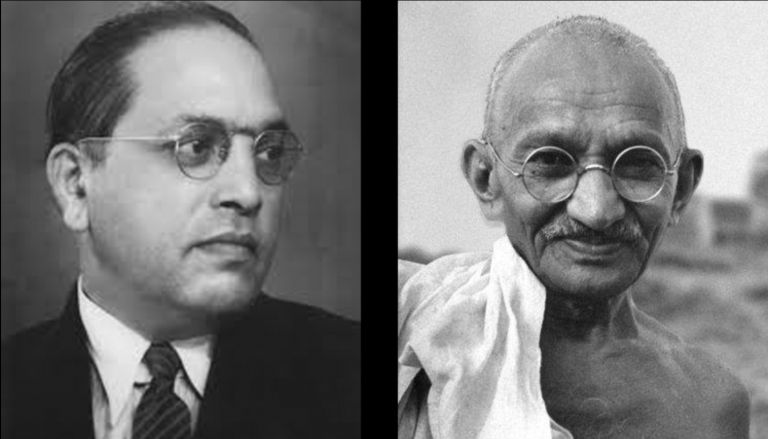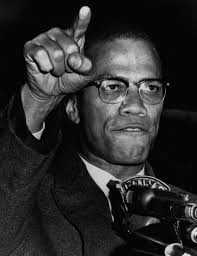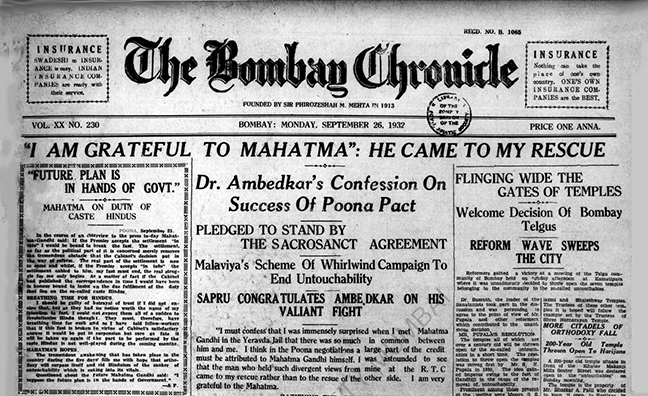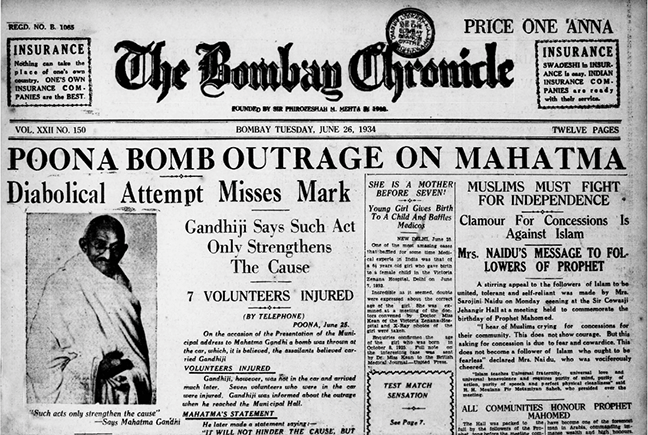Gandhi and Ambedkar:
Liberation Theologists

With fiery saffron hidden under a recently adopted tricolor, Modi’s rise to power saw a mushrooming of RSS and affiliates like the student wing, ABVP. Pseudo-nationalism invaded every campus. The State-induced suicide of a Dalit PhD scholar, Rohith Vemula triggered broad Dalit-Left unity against the hegemonic designs of ABVP/RSS. But despite initial successes the unity was short-lived. The fault lay as much with the Left (of all shades) for being unable to overhaul their own internal dynamics, as with Dalit groups that fell prey to red-baiting and exclusivist identity politics. On one side were Marxists brought up to believe that caste would wither away once the economic base became socialist. On the other were Dalits who understandably did not trust upper caste-led formations. Sadly, the idea that individuals are indelibly marked by birth gained currency.

Identity politics is a double-edged weapon. As long as identifiable groups are oppressed, the oppressed must unite according to identity. ‘Black is beautiful’ was a necessary movement for Afro-Americans in the USA, just as pride in Dalit or Buddhist identity is necessary in India. The trouble begins when this turns into an exclusivist separatist movement. Malcolm X went through a Black Muslim phase when he described all white people as ‘devils’. But in the latter stages of his life he completely rejected this for a much more inclusive critique of injustice and inequality. That is when the American ‘deep state’ killed him. Similarly while a broad section of Dalits are inclusive and understand the distinction Dr. Ambedkar made between the ideology of Brahminism and individuals who happen to be born “upper” caste, there is a tiny section of separatists today who see birth as a sole determining factor. The fact that Western post-modern academia encourages such identity politics in preference to class analysis, has given separatist politics international acceptance.
The Left and Dalits should have been natural allies. At HCU, JNU and across Indian campuses we saw the amazing potential of unity. At other points in time people like Comrade Govind Pansare, Kanhaiya Kumar and Jignesh Mevani have represented this unity. Into this mix I would add progressive Gandhians like Narendra Dabholkar and Medha Patkar who while adhered to non-violence, always fought for the oppressed.
The freedom movement itself struggled with the idea of violence. Even Bhagat Singh who had killed a British officer, recognized non-violence to be the best means for mass movements. According to British records my uncle Achyut Patwardhan along with Aruna Asaf Ali, were amongst the most wanted underground leaders of 1942. Their movement blew up British property taking care not to take lives. He ran the underground radio and was a master of disguise amongst other things but in later years he ensured that history erased him. You hardly hear or read about him anywhere because soon after Independence he became disillusioned with mainstream politics. He did educational and social work but would never discuss the past, even with me. He felt it had all been mostly an illusion. His elder brother, Purshottam (Raukaka to me) was also a freedom fighter and spent over 20 years in and out of British jails. In 1948 while he was making an anti-communal speech, Madanlal Pahwa tried to knife him but was caught. Raukaka who was a Gandhian socialist, refused to file charges and Pahwa was let off. Later this same Pahwa threw a bomb at Gandhi and was part of the conspiracy that eventually killed him.
Both Gandhi and Ambedkar recognized that this country was so steeped in the idiom of religion that atheism or pure rationality would not reach the masses. In my view each in their own way were liberation theologists. Unlike Ambedkar, Gandhi did not choose his own religion, he inherited it. But to this inheritance he applied post-Enlightenment ethical values that were essentially modern. When he began manual scavenging and advocating (even forcing) this on his followers, he destroyed the very basis of the Pollution/Purity dichotomy at the heart of the caste system. Theoretically he for a long time infamously clung to the concept of Varnashrama dharma, but in actual deed he destroyed it the day he took up manual scavenging, a job hitherto reserved for so-called ‘untouchables’. As time went on Gandhi became ever more radical. He clearly learned from Dr. Ambedkar as well as from his own intuitive understanding of the world he saw. In the latter stages of his life he refused to attend any marriage that was not an inter-caste marriage. He had fashioned out of his inherited Hinduism, something entirely new. Only the idiom remained, not the original hierarchical Sanatan Dharma. Whether his reluctance to discard the idiom stemmed from a desire to speak to the masses in a language they could easily follow, or from his own inner belief system, is something that can be debated. What is unmistakable is that Gandhi’s ethical code bears little resemblance to the hierarchical, vengeful structure of traditional Hinduism.
Dr. Ambedkar was more fortunate than Gandhi in that he clearly saw how oppressive the religion of his birth was, being a direct victim of it. So he searched for the best alternative. After examining many religions he finally chose the one closest to Reason. Buddhism is the one world religion that does not posit an external, all-knowing God. However it has a very strong ethical core that Dr. Ambedkar highlighted. At the same time he discarded irrational Buddhist tenets like Reincarnation that traditional Buddhists ardently follow. So I see Ambedkar and Gandhi as liberation theologists. In the same way that revolutionary Left priests like Ernesto Cardenal in Latin America re-interpreted Jesus Christ as a revolutionary who fought and died for justice to the poor, Gandhi and Ambedkar gave new ethical meaning to the religions they adopted and adapted.
Make no mistake that I am equating the two. Their differences are obvious. One came from a privileged caste, the other from the most oppressed. One was steeped in traditional religion in his formative years while the other came from a caste denied the right to education but rose to become the best-read and greatest intellectual of modern India.
I am not blind to the things about Gandhi that are paradoxical and irrational like his life-long demonization of sexuality. Gandhi’s insistence on chastity puts him in the same irrational, patriarchal boat as the priests and monks and nuns of many world religions. And yet this same sex-denying man, by introducing the Charkha as a weapon of non-violent resistance, brought thousands of women into the mainstream of the freedom movement.
Can the Gandhian concept of Sarva Dharma Samabhava (all religions are equal) take the place of Ambedkar’s constitutionally guaranteed democratic rights? I think not. We need the Constitution much more than we need holy books. And yet as many in our country are still hooked to holy books and unholy pretenders, we need liberation theologists who can help people to discard the worst features of their inherited religious culture and replace them with ethical, non-exclusivist interpretations.
Waiting for everyone to become rationalists may take centuries. Ethics is the answer. Small wonder that Ambedkar and Gandhi, each in turn arrived at individual definitions of Ahimsa.
The affinities between Gandhi and Ambedkar are clearly greater than their differences. They were both egalitarian humanists at heart. Take the act of “Satyagraha”, a term coined by Gandhi. Ambedkar used this very term and form of struggle to launch his Mahad Satyagraha to claim drinking water rights. There are many other examples of common ideas and action. I was pleasantly shocked to read what Dr. Ambedkar had to say in 1932 immediately after concluding the now infamous Poona Pact (where the idea of separate electorates for Dalits was abandoned in favour of reserved seats for Dalits). Popular theory is that Ambedkar was blackmailed by Gandhi’s fast-unto-death into accepting a bitter compromise. But Ambedkar’s tone in 1932 after signing the pact was totally different. He had high praise for Gandhi and stated that the “Mahatma” (yes, contrary to popular belief, Ambedkar referred to Gandhi as “Mahatma” at this point in time) offered a much better deal for Dalits in terms of reserved seats than Ambedkar himself had asked or hoped for.

In fact if you look at the newspapers of 1932 around the time of the Poona Pact you can see signs of an anti-caste renaissance triggered by Gandhi declaring that he would fast unto death unless caste Hindus gave up untouchability. There are accounts of temples being thrown open to Dalits, and of common village wells allowing Dalits to draw water, an unheard of practice upto then.
The consequences were almost immediate. Brahminical forces had already marked Gandhi as an enemy for his insistence that manual scavenging was for everyone to do and not a job exclusively reserved for Dalits. Granting reserved seats (affirmative action) for Dalits via the Poona Pact was the last straw. In 1934, within two years of the Poona Pact, Brahminical forces made the first of seven separate attempts to murder Gandhi. A bomb thrown at his motorcade in Pune missed and exploded on another car.

One of the conspirators, Madhav Apte, was later to join a successful plot to kill Gandhi in 1948. Hindutva, relying on the statement of Nathuram Godse, the man who fired the fatal bullets, has always claimed that Gandhi was killed because he appeased Muslims and helped create Pakistan. The truth is more complex. One only needs to remember that the murder attempts first began in 1934, when Pakistan had not yet become even a concept. Clearly the hatred that first began as caste hatred against Gandhi became more bitter when Gandhi was seen to be treating Muslims as fellow citizens with equal rights.
The renaissance of 1932 was short lived. By 1934, seeing the reluctance of his Congress party to take his social reforms seriously, Gandhi gave up his party membership to concentrate on village level work to eradicate untouchability. Sadly many Dalits and even some non-Dalit intellectuals have forgotten this short lived moment of potential renaissance. There is no denying the fact that Dr. Ambedkar did get disgusted with the Congress and in 1945 wrote a scathing critique titled “What Gandhi and Congress have done to the Untouchables”. It was a fair critique of the Congress but perhaps unfair to the man who had resigned from the Congress as early as 1934. How much of the blame for the failures of Congress are attributable to Gandhi is a matter of debate. We know that Gandhi’s writ did not work in preventing either Partition or the bloodshed that preceded and followed it. On the 15th of August 1947 Gandhi did not attend the flag hoisting on Independence Day. He was busy fighting the communal inferno in the countryside. It is an imponderable of history of what India might have achieved had Gandhi and Ambedkar worked together, both for freedom from the British and for freedom from caste.
Gandhi had a lot of obscurantist ideas to start with but as time went on he kept evolving. In the end I see him as a great humanist who died for his belief in non-violence and universality. He was also an inventive anti-Imperialist (though in earlier days he had supported the British Empire) and an organic naturalist that today’s globally warmed world desperately needs.
Throughout his life Dr. Ambedkar fought for reason and justice without resorting to violence. Today his followers, like the Ambedkar Students Association, Jignesh Mewani and many others are leading the resistance against religious and caste hatred. Against all odds Radhika and Raja Vemula (Rohith Vemula’s mother and brother) are continuing the fight for justice. With the rising spectre of intolerant authoritarianism, is it not time for all rationalists, humanists and those who fight for social and economic justice to unite against the usurpers of our democracy and our history?
Anand Patwardhan
April 2017 (Revised March 2020)